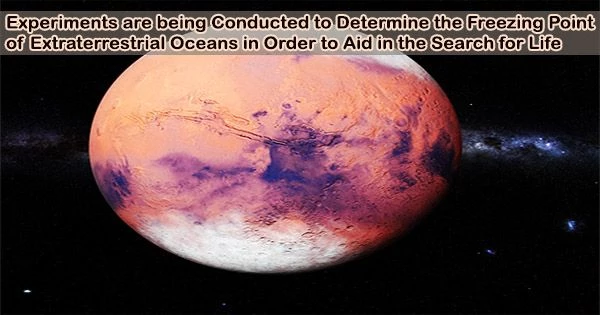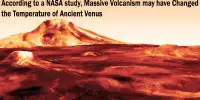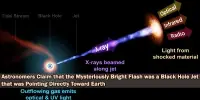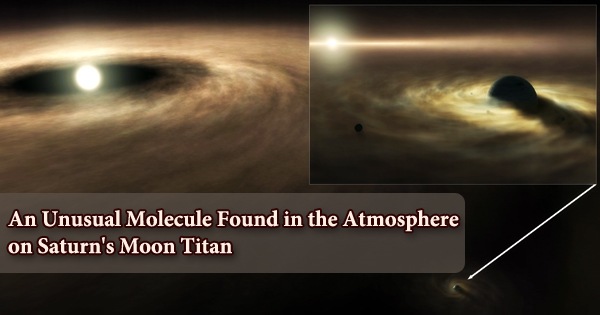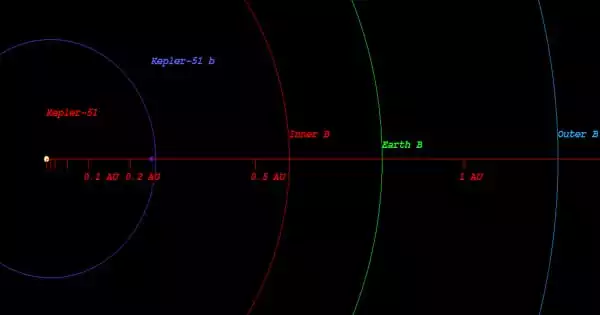University of Washington and University of California, Berkeley researchers conducted studies to determine the physical boundaries for the possibility of liquid water in freezing extraterrestrial worlds.
This combination of geology and engineering was created to aid in the search for extraterrestrial life and the forthcoming robotic study of waters on other planets’ moons.
The results were recently published in Cell Reports Physical Sciences.
“The more a liquid is stable, the more promising it is for habitability,” said co-corresponding author Baptiste Journaux, an acting assistant professor of Earth and space sciences at the UW. “Our results show that the cold, salty, high-pressure liquids found in the deep ocean of other planets’ moons can remain liquid to much cooler temperature than they would at lower pressures. This extends the range of possible habitats on icy moons, and will allow us to pinpoint where we should look for biosignatures, or signs of life.”
Jupiter and Saturn’s frozen moons, particularly Europa, Ganymede, and Titan, are top prospects for extraterrestrial life in our solar system. These ice-encrusted moons are predicted to have massive liquid oceans that are several dozen times the volume of Earth’s oceans.
“Despite its designation as the ‘blue marble,’ Earth is remarkably dry when compared to these worlds,” Journaux said.
The new data obtained from this study may help further researchers’ understanding of the complex geological processes observed in these icy ocean worlds.
Baptiste Journaux
These moons’ oceans may contain various types of salts and are projected to range in depth from roughly 100 miles on Europa to more than 400 miles on Titan.
“We know that water supports life, but the major part of the oceans on these moons are likely below zero degrees Celsius and at pressures higher than anything experienced on Earth,” Journaux said. “We needed to know how cold an ocean can get before entirely freezing, including in its deepest abyss.”
The research concentrated on eutectics, or the lowest temperature at which a salty solution can remain liquid before completely freezing. Salt and water are two examples: salty water remains liquid below the freezing temperature of pure water, which is why people spray salt on highways in the winter to prevent ice formation.
The tests made use of UC Berkeley equipment that was initially developed for future cryopreservation of organs for medicinal uses and food storage. However, for this study, the authors utilized it to recreate the circumstances expected to exist on the moons of other planets.
Journaux, a planetary scientist and expert in the physics of water and minerals, collaborated with UC Berkeley engineers to test solutions of five different salts at pressures of up to 3,000 times atmospheric pressure, or 300 megapascals, which is around three times the pressure in Earth’s deepest ocean trench.
“Knowing the lowest temperature possible for salty water to remain a liquid at high pressures is integral to understanding how extraterrestrial life could exist and thrive in the deep oceans of these icy ocean worlds,” said co-corresponding author Matthew Powell-Palm, who did the work as a postdoctoral researcher at UC Berkeley, also co-founder and CEO of the cryopreservation company BioChoric, Inc.
Journaux recently started working with NASA’s Dragonfly mission team, which will send a rotorcraft in 2027 to Saturn’s largest moon, Titan. In addition, NASA is directing the Europa Clipper mission in 2024 to study Europa, one of Jupiter’s numerous moons.
Meanwhile, the European Space Agency in 2023 will send its JUICE spacecraft, or Jupiter Icy Moons Explorer, to explore three of Jupiter’s largest moons: Ganymede, Callisto and Europa.
“The new data obtained from this study may help further researchers’ understanding of the complex geological processes observed in these icy ocean worlds,” Journaux said.
Other authors are Boris Rubinsky, Brooke Chang, Anthony Consiglio, Drew Lilley and Ravi Prasher, all at UC Berkeley. The National Science Foundation and NASA funded the study.
